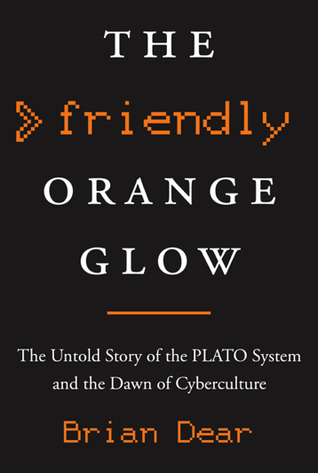Posts about History
All the posts...The Friendly Orange Glow
02 January 2023

Obscurity
The Friendly Orange Glow tells the history of a piece of educational software, PLATO, that grew into a whole microcosm of the internet and cyber culture years before the internet we’ve known for the past 25 years.
Brian Dear attributes the obscurity of PLATO to it having been built and developed at University of Illinois in the Midwest and not at a school on the coast. The PLATO system also used dedicated client hardware with integrated slide projectors, and it ran on a single mainframe. Everything was coded in a programming language called TUTOR, which was primarily designed for authoring interactive lessons using the orange gas plasma display, a rudimentary touch input for the screen, the keyboard, an slide projector integrated into the display, and even occasional peripherals like some sort of synthetic woodwind sound device. It was all very specialized from the beginning.
I loved the time the author dedicated to describing technical details, like how the orange gas plasma display was developed: the grids of wiring, pockets of noble gases trapped between them, and the way accidental contamination allowed them to discover a memory effect they could use to keep each pixel lit. Fixing the contamination lost the memory effect. He presented a wonderful level of detail for my interest.
Cyber Culture
Donald Bitzer showed off PLATO to anyone who would take a moment to try it. He wanted people to learn and get creative, seldom shutting down experiments. He’d embrace the high school and university hackers who would wander into the labs, and he put some of them to work building hardware or testing. These people would go on to build all sorts of multiplayer games and other software to be used by other users on the system. Bitzer recognized the value in observing what people did with the spare cycles of the system at night. From that freedom sprung an entire hacker culture similar to what I found in my youth, so I felt great nostalgia for this work. Again though, I was discovering this culture in the 1990s with bulletin board systems and the internet in college, and Bitzer’s revolution had already happened in the 1970s. We were always pushing the limits of what we were supposed to do with these systems. It looked like wasted time, but we learned the most.
Discovering new lessons or software on the PLATO system seemed akin to our exploration of BBSes via our modems in the 1990s. We’d stumble around trying to find some new phone number or new corner of an existing BBS, and these kids in the 1970s were exploring PLATO to find games or long threaded discussions in notes that others were developing.
PLATO started as a way to display some slides and teach a self-paced lesson, but grew into games, forums, and email before such things existed. It could have grown into one of the great online services that followed, but they may have gotten too tied up in their centralization and specialized hardware. The management of their commercial partner may not have helped either, because they just wanted to sell mainframes, and didn’t recognize the value of community that had been built around the system.
The book was an exciting listen, and I blasted through the whole thing in about 2 days, because I just couldn’t put it down. It reminded me of my childhood and the all the potential of the systems of the day and the creativity that came from the limitations of the day. PLATO evolved in an alternate universe in the middle of the country away from the technology hubs.
First Transistor Radio
18 October 2016
The First Transistor Radio hit the market on this day (18 October) in 1954. (Read that in the voice of Garrison Keillor.)
Learning this today reminded me of one of my first pieces of electronics as a kid. It was a little blue, portable transistor AM radio that took 2 AA batteries. I got it as a prize from the school fundraiser, and I specifically remember it being listed as a transistor radio, like that was something special. I’m not sure how special that really was in around 1985, since we’d evidently had the technology readily available since 1954.
That radio was packed full of components on a board in its blue plastic shell. From the first time I had to open it to put batteries in it, I was intrigued by it — solder joints, variable capacitor, capacitors, resistors, transistors, antenna coil with ferrous core, bits of glue holding it together, etc. That thing came apart many times as I compared its contents to other devices and to those on my electronics kit later.